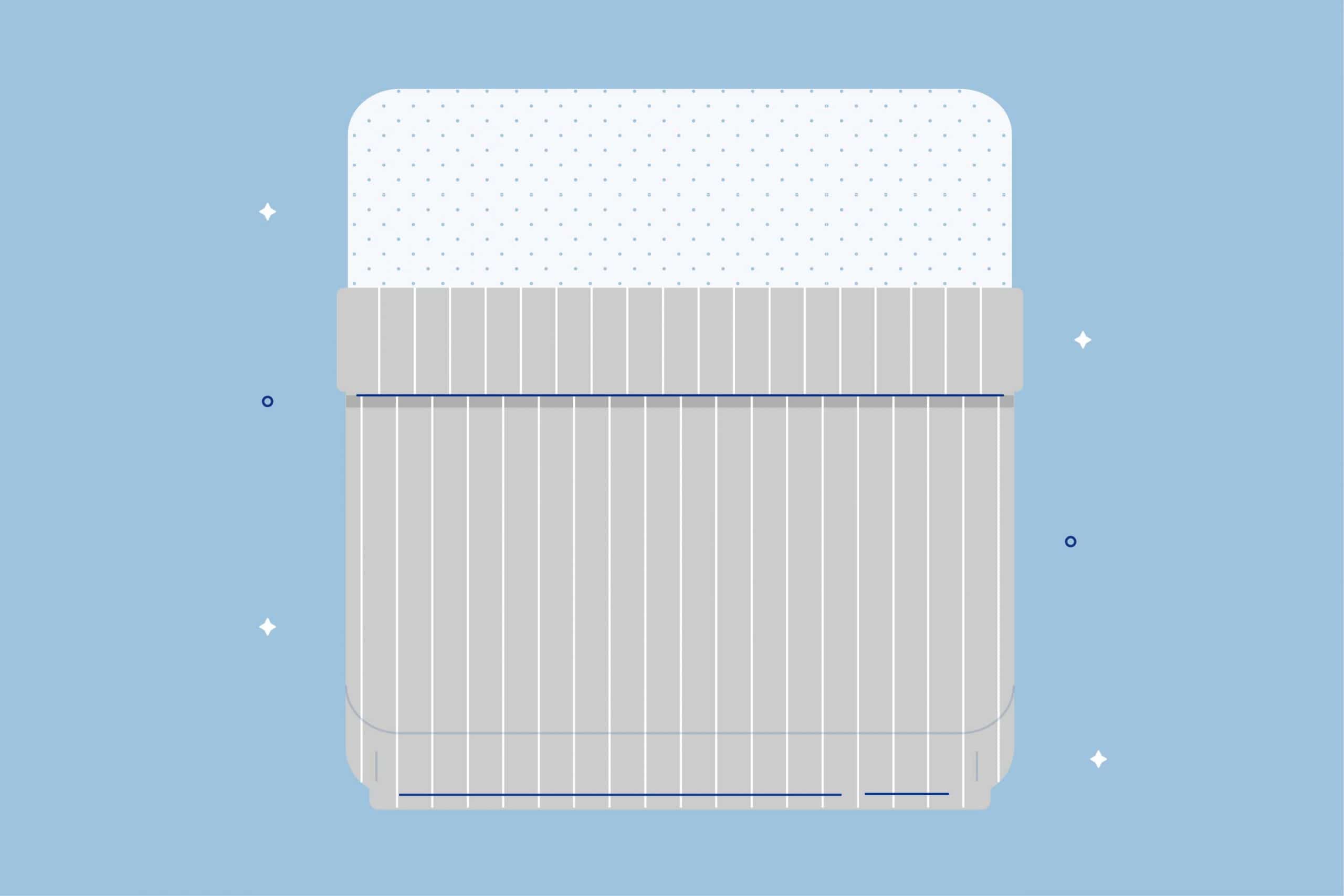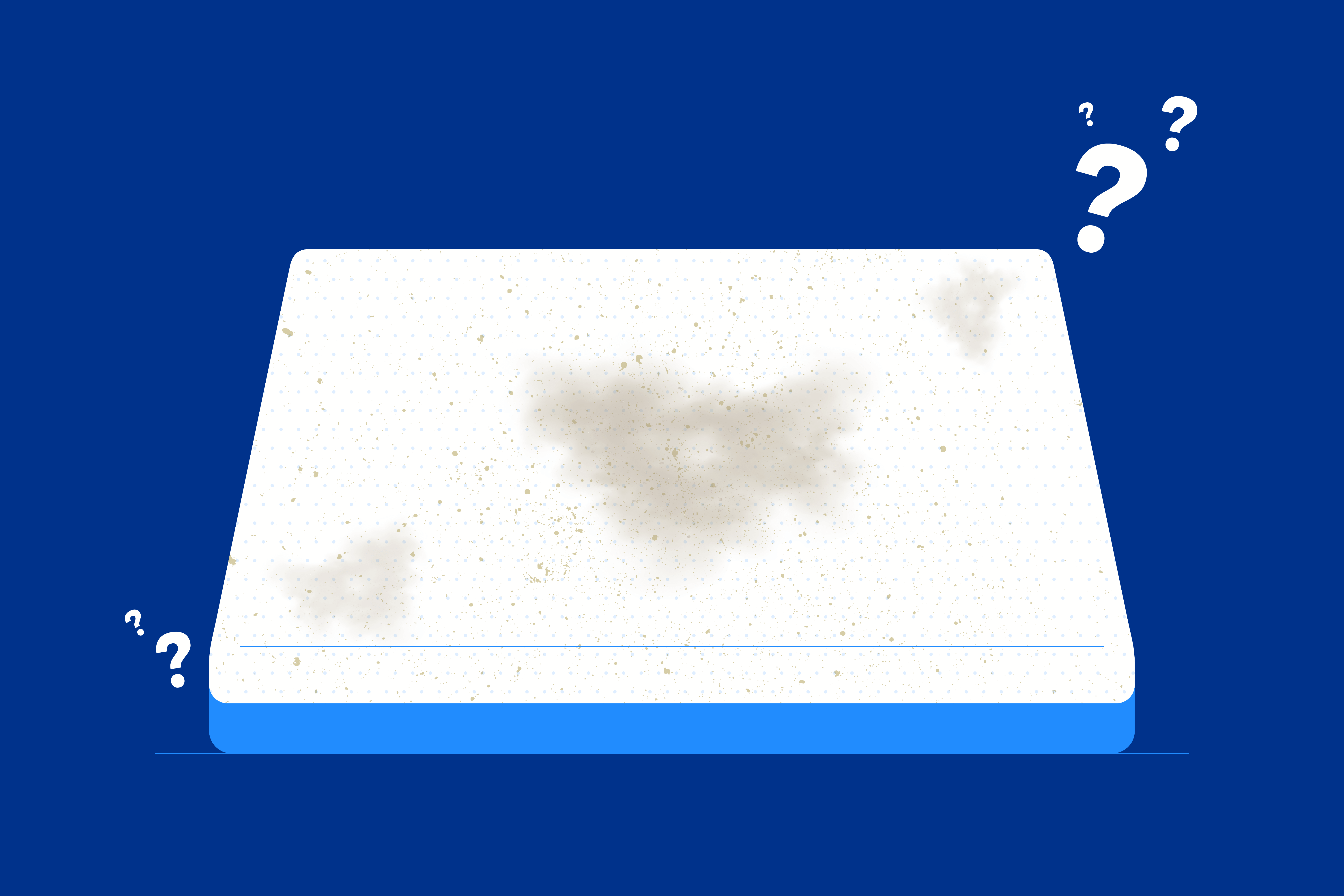Key Takeaways
- Proper Folding Techniques: Efficiently fold blankets and sheets to save space. Stack them neatly by size to prevent creases and wrinkles. Consider using cardboard dividers for organization.
- Unique Storage Solutions: Explore creative storage ideas such as quilt racks, cedar chests, unused beds, or DIY options using pool noodles and raw wood. These solutions not only save space but also add aesthetic appeal.
- Preservation by Fabric Type: Different bedding fabrics require specific storage methods. Store cotton in a cool, dry place, bamboo in breathable containers, and silk in breathable fabric. Use acid-free tissue paper for preservation and consider natural fresheners.
Are you struggling to find enough space to store all of your blankets, sheets, and quilts? Do you want to ensure that your fabrics remain in top condition for years to come? Look no further! In this article, we will provide you with expert tips on how to store your blankets, quilts, and linens in the most efficient and effective ways possible.
From fabric types and folding techniques to unique storage solutions and preservation methods, we will cover everything you need to know to keep your bedding organized and damage-free. Follow our ways to store your quilts and quilt storage ideas to maximize space and minimize clutter.
Don’t let the lack of space hold you back anymore. Keep reading to learn the best tips for storing your blankets and other linens!
Best Amerisleep Bedding
Quick Guide: A 30-Second Summary
| Best Bamboo Sheets | Amerisleep Bamboo Sheets |
| Best Comforter | Amerisleep Recover+ Comforter |
| Best Duvet Cover | Amerisleep Percale Duvet Cover Set |
Tips for Folding and Storing Blankets and Sheets
Are you tired of struggling to fit your folded blankets and sheets into your cramped linen closet or storage area? With these expert techniques for folding and storing, you can save space and keep your bedding easily accessible.
Folded Quilts and Sheets
When it comes to saving space, folding your blankets and sheets is the way to go. To prevent creases and wrinkles, fold your linens neatly and stack them on top of each other by size. Consider using cardboard dividers to keep your stacks organized and prevent them from toppling over.
Hanging Quilts
Hanging your quilts is an excellent option if you have limited shelf space. Fold your quilt in half and drape it over a clothes hanger, then hang it up in your closet or storage area. For added protection, consider wrapping your quilt in acid-free tissue paper before hanging it up.
Using Vinyl Bags
Durable vinyl bags can be a versatile storage tool for your blankets and sheets. Store them in clear plastic bags to easily see what’s inside, or use zippered plastic bags to prevent dust and moisture from getting in. Keep your plastic bags in a cardboard box to prevent them from sliding around and making a mess in your storage area.
Storage Tips for Fabric Types
Different bedding fabrics and types of bed sheets may require different storage methods to maintain their quality and longevity. Regardless of the fabric type, it’s essential to store bedding in a clean and dry environment. Before storing, make sure the bedding is clean and completely dry to prevent the growth of mold and mildew.
Additionally, consider adding sachets or other natural fresheners to keep the bedding smelling pleasant during storage.
Cotton
Storage: Cotton bedding should be stored in a cool, dry place to prevent mold and mildew growth.
Avoid: Avoid storing cotton bedding in plastic bags for extended periods, as this can trap moisture and lead to a musty smell.
See also:
Bamboo
Storage: Store bamboo bedding in breathable containers, such as cotton bags or pillowcases. This allows air circulation, preventing moisture buildup. Keep bamboo bedding in a cool, dry place to prevent mold and mildew growth.
Avoid: Bamboo fibers can be sensitive to prolonged exposure to direct sunlight, leading to color fading. Store bamboo bedding away from direct sunlight. Avoid storing bamboo bedding in damp or humid environments, as this can lead to mildew and unpleasant odors.
See also:
Tencel
Storage: Store Tencel bedding in a cool, dry place to prevent moisture buildup and the growth of mold and mildew. Use breathable storage containers or cotton bags to allow air circulation and prevent any potential odors.
Avoid: Like many natural fibers, Tencel can be sensitive to prolonged exposure to direct sunlight, which may lead to color fading. Store Tencel bedding away from direct sunlight. Avoid storing Tencel bedding in damp or humid environments to prevent the growth of mold.
See also:
Linen
Storage: Linen should be stored in a well-ventilated area. It benefits from air circulation, which helps prevent wrinkles and maintain freshness.
Avoid: Avoid storing linen in humid or damp conditions, as it can lead to mildew.
See also:
Silk
Storage: Silk bedding should be stored in a breathable fabric, like a cotton pillowcase or a cloth bag. This helps prevent friction and snags.
Avoid: Avoid exposure to direct sunlight, as silk can fade over time.
See also:
Flannel
Storage: Flannel bedding can be folded and stored in a cool, dry place. It’s essential to keep it away from dampness to prevent mold.
Avoid: Avoid storing flannel in airtight containers, as it needs some air circulation to stay fresh.
See also:
Polyester and Microfiber
Storage: Polyester and microfiber bedding can be stored in a cool, dry place. They are generally less prone to wrinkles compared to natural fibers.
Avoid: Avoid storing polyester and microfiber bedding in direct sunlight, as it can cause fading.
See also:
Wool
Storage: Wool needs to breathe, so store it in breathable containers like cotton or linen bags. Avoid plastic bags or airtight containers, as they can trap moisture and lead to mold and mildew growth. Store wool bedding in a cool, dry place. Excessive heat and humidity can affect the wool fibers and lead to unpleasant odors.
Avoid: Wool is susceptible to moth damage. Store wool bedding with natural moth repellents like cedar balls or lavender sachets. Regularly inspect your wool bedding for any signs of moths or insects. Avoid exposing wool bedding to direct sunlight for extended periods, as this can cause fading.
Fleece
Storage: Store fleece bedding in a cool, dry place to prevent the growth of mold and mildew. While fleece is less prone to moisture-related issues than natural fibers, using breathable containers or fabric bags can help maintain freshness and prevent any trapped odors.
Avoid: Fleece can be sensitive to prolonged exposure to direct sunlight, leading to color fading. Store fleece bedding away from direct sunlight. Avoid storing fleece in areas with excessive heat, as high temperatures can affect the fabric’s texture and may cause sheets pilling.
Down and Down Alternative
Storage: Down comforters should be stored in a breathable bag or cotton cover to prevent compression and allow for air circulation.
Avoid: Avoid compressing down bedding for extended periods, as it can reduce its loft and warmth.
See also:
Protecting Quilts from Sunlight and Moisture
If you have an antique quilt, you’ll want to preserve the time and effort that went into every stitch and every detail of your quilt. When you store quilts, it’s essential to protect your precious work of art from damaging elements like sunlight, moisture, and pests.
Storing in Extra Room
If possible, store your quilt in a separate room, away from direct sunlight and fluorescent lighting. Extreme temperature fluctuations and UV rays from sunlight can cause fading, yellowing, and brown spots on your quilt.
Dark Place for Storage
It’s best to keep your quilt in a dark place, such as inside a closet or chest, that’s free from moisture and insect damage. Avoid storing your quilt in plastic bags or taping it with duct tape as these can trap moisture and promote mildew growth. Instead, opt for acid-free tissue paper or muslin cloth to wrap your quilt before folding it.
Preventing Fading and Insect Damage
To prevent fading and insect damage, avoid placing your quilt near windows, vents, or heating systems. Regularly inspect your quilt to check for signs of insect damage, such as small holes or larvae. You can also use cedar blocks or lavender sachets to repel moths and other insects.
Creative Quilt Storage Ideas
Are you looking for creative ways to store your quilts and keep them in pristine condition? Look no further! We’ve compiled a list of unique and practical storage ideas that will help you maximize space and preserve the quality of your quilts.
Quilt Rack or Cedar Chest
A quilt rack or a cedar chest are classic options for storing your quilts. These pieces of furniture not only add a touch of elegance to your room but also keep your quilts protected from dust, dirt and sunlight.
Unused Bed or Spare Bed
If you have an unused bed or a spare bed, you can use it to store your quilts. Simply place your quilts on the bed and cover them with a clean sheet or a light blanket. This way, your quilts are easily accessible and you can change them according to the season or your mood.
Alternatively, if you have an ottoman bed, you can store your quilts away inside the bed frame.
Use Pool Noodles and Raw Wood
For a DIY storage option, you can use pool noodles and raw wood to create a quilt storage solution. Cut your pool noodle to size, wrap them in acid-free tissue paper and slide them onto a wooden dowel. Mount the dowel on two wall brackets and voila! You have a unique and affordable quilt storage option.
Acid-Free Tissue Paper and Hope Chests
Preserve your antique quilts by storing them in hope chests lined with acid-free colored tissue paper. The paper helps protect the fabric from deteriorating due to exposure to air and sunlight. Make sure to wash your hands before handling the quilts, and don’t store anything else in the chest to avoid damaging the fragile quilts.
We hope these ideas have inspired you to get creative with your quilt storage. By using these tips, you can keep your quilts in top condition and enjoy them for years to come.
Freshening Up Stored Bedding
Take the bedding out of storage and shake it gently to remove any settled dust. If possible, air out the bedding by hanging it outside in a shaded area for a few hours. This allows for natural ventilation and helps eliminate any musty odors.
You can also try a sprinkling of baking soda to deodorize your bedding, much as you would to freshen up a mattress. Place a thin layer of baking soda over the bedding and let it sit for a few hours. After allowing the baking soda to work its magic, either vacuum the bedding or shake it out outdoors to remove the baking soda along with any absorbed odors.
Next, check for any specific laundry care instructions on the bedding labels and follow them accordingly. For fabrics that tolerate it, consider placing the bedding in the dryer on a low or no-heat setting with a couple of dryer sheets. This can help fluff up the bedding and impart a fresh scent.
If your bedding is machine washable, launder it following the recommended care instructions. Use a mild detergent, and add a fabric softener or a cup of white vinegar to the rinse cycle to neutralize odors and soften the fabric. Ensure the bedding is thoroughly dry before putting it back on your bed or into storage.
As a final touch, you can use a pillow spray or linen spray to provide a welcome spritz of pleasant aromas..
FAQs
What is the best way to store extra bedding?
The best way to store extra bedding is by utilizing breathable storage containers or bags, such as cotton or linen storage bags, which prevent moisture buildup. Fold bedding neatly to minimize wrinkles and damage, and store in a cool, dry place like a linen closet or under-bed storage. Consider adding sachets of natural fragrances to keep your bedding smelling fresh.
How do you store bedding without a closet?
If you don’t have a closet, use alternative storage solutions such as under-bed storage bins, decorative baskets, or a storage ottoman. Fold bedding neatly and place it in these storage containers, ensuring they are kept in a dry, cool location. Use furniture with built-in storage, like a storage bench or a bed with drawers, to maximize space and keep bedding organized.
How do you store bedding so it stays fresh?
To keep bedding fresh, ensure it’s completely dry before storing to prevent mold or mildew. Use breathable storage containers to allow air circulation, and avoid plastic bags that can trap moisture. Add natural deodorizers like lavender sachets or cedar blocks to keep your bedding smelling pleasant.
Periodically, take out stored bedding, expose it to fresh air, and rotate the items to prevent prolonged compression.
How do you store a comforter when not in use?
Store a comforter by folding it neatly and placing it in a breathable fabric storage bag or a cotton duvet cover. Avoid plastic bags, as they can trap moisture and lead to musty odors.
Keep the comforter in a cool, dry place, and consider adding sachets of natural fragrances to keep it smelling fresh. Periodically fluff and air out the comforter to maintain its loft.
Is it OK to store blankets in plastic bags?
We cannot recommend storing blankets in standard plastic bags (such as grocery store bags or trash bags), as they can trap moisture and lead to a musty smell or even mold. The same goes for storing quilts, sheets, pillowcases, etc.
Instead, opt for breathable fabric storage bags or containers to allow air circulation, preventing any potential damage to the blankets and bedding. Ensure the blankets are clean and completely dry before storage to maintain freshness.
How do you store a large amount of blankets?
Storing a large amount of blankets can be efficient with vacuum-sealed storage bags. These bags compress the blankets, reducing the amount of space they occupy. However, be cautious with natural fibers, as prolonged compression can affect their quality.
Alternatively, consider using a dedicated linen closet, under-bed storage bins, or a storage ottoman to keep a sizable blanket collection organized and accessible.
Should I store duvets in duvet covers?
Yes, we recommend storing duvets in their duvet covers. Duvet covers protect against dust and stains, making it easier to maintain the cleanliness of your duvet. They also offer a convenient way to change the look of your bedding and can be laundered more frequently for better hygiene. Always ensure both the duvet and duvet cover are clean and dry before storing.
However, if you wish to use your duvet cover as a bedspread as it gets warmer and store the duvet separately, you may do so as well.
Can I store bedding in cardboard boxes?
While it’s not ideal in our experience, storing bedding in cardboard boxes is acceptable if certain precautions are taken. Ensure the bedding is clean and dry before storage, use acid-free tissue paper to prevent discoloration, and avoid direct contact between bedding and cardboard to mitigate potential acid transfer. Adequate ventilation in the storage area is crucial, and it’s advisable to avoid plastic bags to prevent moisture buildup.
Conclusion
Congratulations! You now have a comprehensive guide on how to store various types of bedding and linens. By following the expert tips for folding and storing blankets and sheets, getting creative with quilt storage ideas, protecting quilts from sunlight and moisture, and cleverly storing sheets and linens, you can maximize space in your home and preserve the quality of your fabrics.
Remember to always store your linens in a clean and dry space, away from direct sunlight and extreme temperature fluctuations. Utilize acid-free tissue paper, hope chests, and other proper storage techniques to prevent damage and discoloration.
Whether you’re a quilter, a bedding enthusiast, or simply looking for efficient storage solutions, these techniques will help keep your linens organized and in top condition for long periods. Thank you for reading, and happy organizing!
About the author
Mitchell Tollsen is a graduate student and a freelance writer who’s contributed to the Early Bird blog for three years. Mitchell’s always been fascinated by the science of sleep and the restorative processes our bodies undergo when at rest. The self-titled “Sleep Expert” is always looking for ways to improve his shut-eye, and throughout the years has implemented numerous lifestyle changes and tried dozens of sleep-promoting gadgets to determine the best ways to truly get better rest.
View all posts





